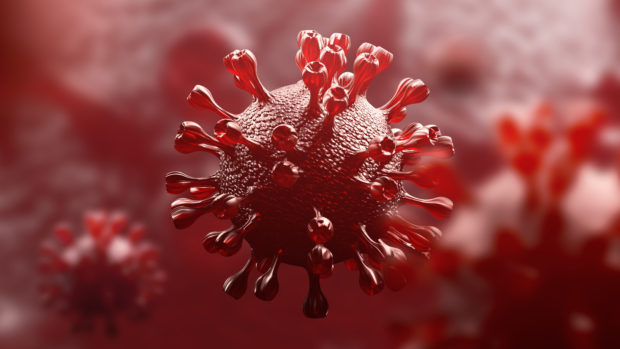
Super close-up image of the coronavirus, which causes COVID-19, in human lung. Science microbiology concept. –Medical health virology infection research / 3D illustration
MANILA, Philippines — A total of 190 overseas Filipino workers (OFW) have so far contracted COVID-19 since the start of the fifth wave of infections in Hong Kong in early February.
Philippine labor attache Atty. Melchor Dizon said Tuesday that of the number, 16 have already recovered. Out of the 16, eight have already been able to go back to their employers while the rest are still isolated in quarantine facilities.
He said some OFWs are in isolation centers run by non-government organizations (NGOs) that cater to all nationals while some are quarantining at home.
There are no facilities that cater to Filipinos exclusively, Dizon added.
“‘Pag ganitong COVID-19 cases kasi, we partner with NGOs. Sa NGO muna dinadala in the meantime tapos we have an arrangement with the labor government na pag mayroon nang government isolation center, tina-transfer sila doon,” he said in an interview over ABS CBN’s TeleRadyo.
(In these cases, we partner with NGOs so Filipinos can stay there and we ask the labor government to accommodate Filipinos in government centers.)
The Philippine Overseas Labor Office has also provided accommodation in “boarding houses” to OFWs who are to be repatriated to the Philippines.
According to the Department of Labor Employment, there are over 220,000 OFWs in Hong Kong, most of whom are domestic workers.
Dizon admitted that there are OFWs who are forced to sleep in parks because they are unable to use public transportation for their transfer to isolation facilities.
He said the Philippine government there is also arranging to pick-up OFWs to bring them to facilities to avoid this situation.